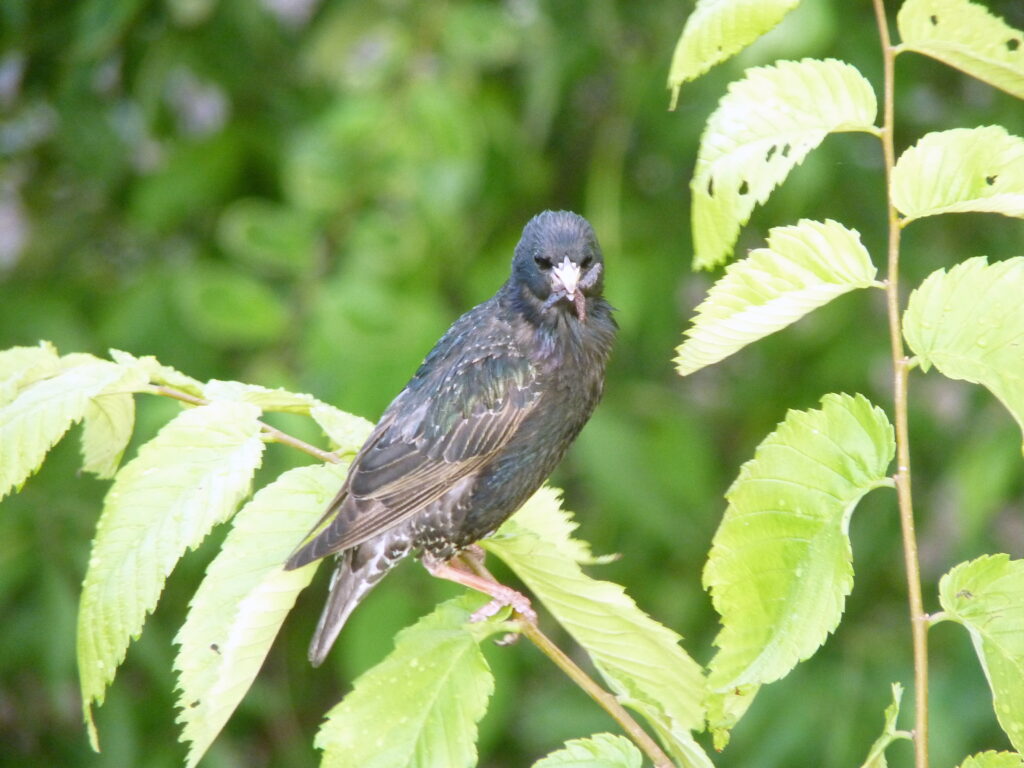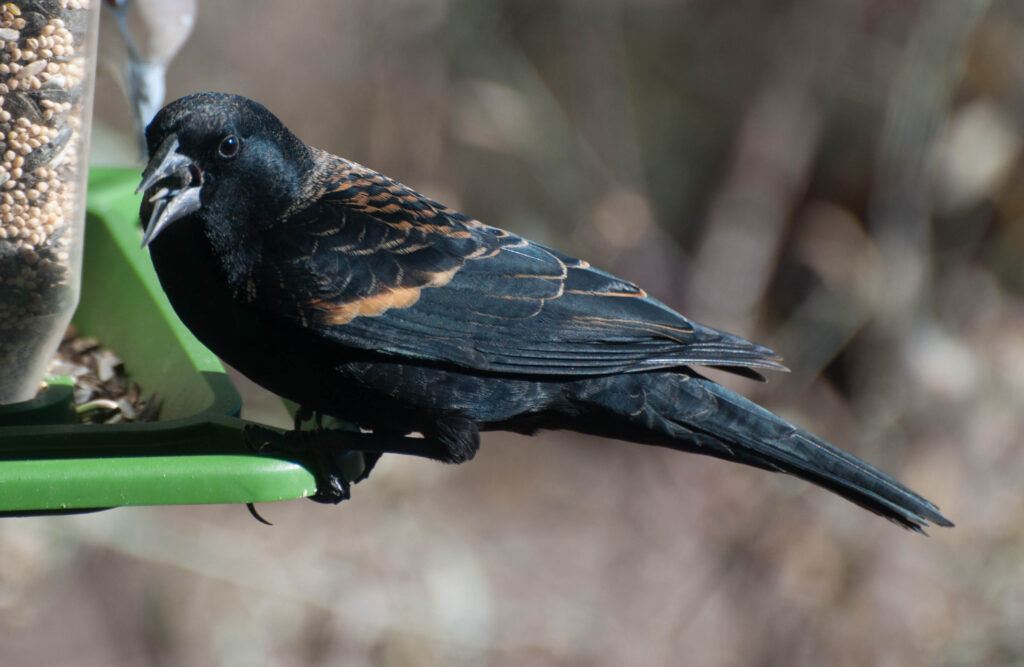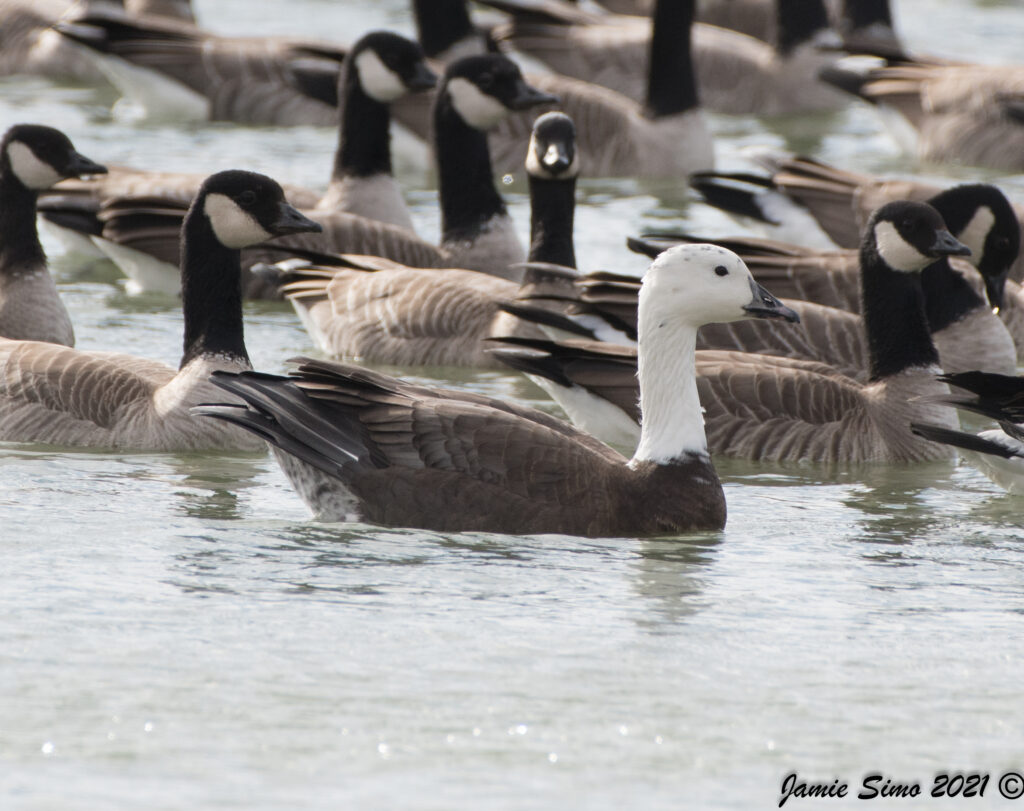It was a gusty morning this past Saturday at Waneka Lake and Greenlee Preserve, but thankfully that didn’t keep us from seeing some great birds, including some small songbirds that tend to hunker down deep in the brush on windy days. We were immediately greeted in the parking lot by a flock of European Starlings. I have mixed
feelings about these invasive birds, but they are very adaptable and quite beautiful. The name “starling” comes from the white speckle pattern they wear in the winter. Rather than molting into new plumage in the spring, abrasion gradually wears the pale tips off their feathers leaving behind the irridescent green- and purple-black feathers they wear during courtship. Male Red-winged Blackbirds’ glossy black appearance in spring and summer is also due to abrasion rather than molt.
One special song bird we briefly saw was a White-throated Sparrow. This chunky little sparrow is common in the Eastern U.S., but is relatively rare here in Colorado, though it’s shown up at Waneka Lake the last few winters. White-throated Sparrows have head stripes like our usual White-crowned Sparrow, but it has yellow lores (the space between the eye and the beak), and, obviously, a white throat. On their regular wintering grounds they’ll often practice singing just like our White-crowned Sparrows will. Their song is often mnemonicized as “Old Sam Peabody Peabody Peabody.”
Winter along the Front Range is prime duck and goose season and Waneka Lake/Greenlee Preserve didn’t disappoint. At Greenlee Preserve were were able to get great looks at both dabbling ducks such as Mallards and American Wigeon, as well as diving ducks like Buffleheads and Ring-necked Ducks. Dabbling Ducks are surface-feeding ducks. Rather than diving under the water to find food such as fish, they can be seen with their butts tipped up in the air while their heads are busy underwater sucking up aquatic plants or small insects. Because they feed on the surface, dabbling ducks are more agile on land with feet more in the center of their bodies while diving ducks have legs and feet placed well back on their bodies to act as little rudders when swimming underwater.
The highlight of our trip was the 3 most likely hybrid Canada x Snow Geese we saw in a large flock of Canada and Cackling Geese on Waneka Lake proper. These geese were distinguished from “blue phase” Snow Geese by their uniformly dark bodies with no white on the tertials and by their greyish-pink bills.
A great day for birding!
Waneka Lake/Greenlee Preserve
27 species (+1 other taxa)
Cackling Goose 100
Canada Goose 400
Snow x Canada Goose (hybrid) 3
American Wigeon 5
Mallard 66
Ring-necked Duck 3
Bufflehead 5
Common Goldeneye 1
Eurasian Collared-Dove 3
American Coot 2
Ring-billed Gull 9
Sharp-shinned Hawk 1
Bald Eagle 2
Red-tailed Hawk 1
Northern Flicker 1
Blue Jay 3
Black-billed Magpie 1
American Crow 3
Common Raven 1
Black-capped Chickadee 7
White-breasted Nuthatch (Interior West) 1
European Starling 30
American Robin 3
House Sparrow 3
House Finch 3
White-crowned Sparrow 4
White-throated Sparrow 1
Red-winged Blackbird 30





Comments
Write Comment